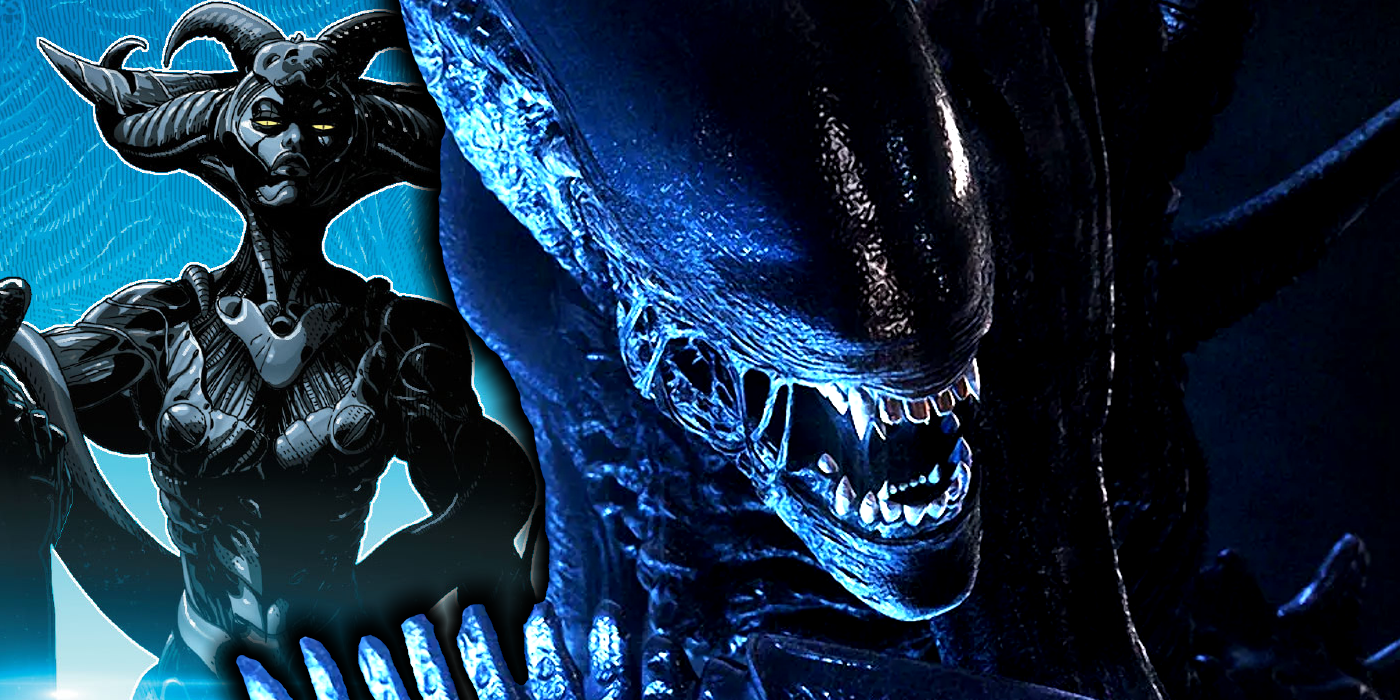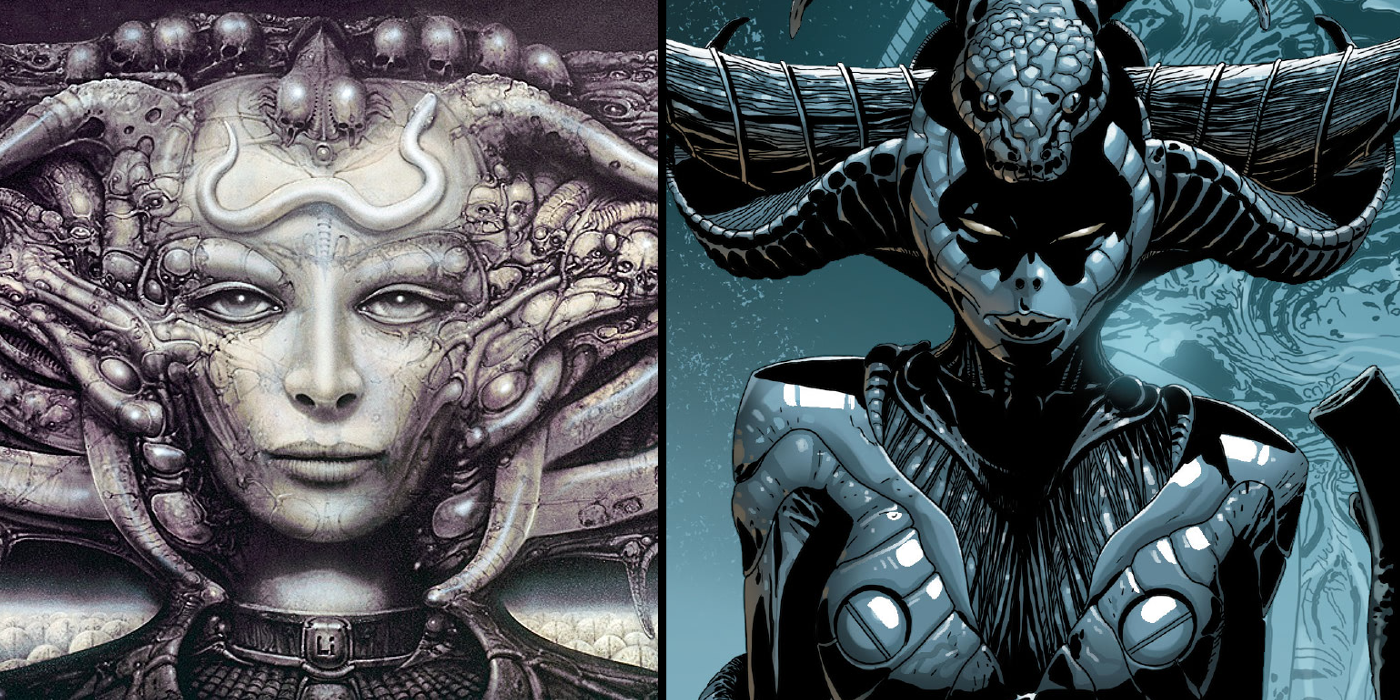Since blowing onto the scene last year, Marvel Comics’ new Alien series has met both support and criticism, but one controversial new piece of lore isn’t as much of a stretch as fans might assume. Written by Phillip Kennedy Johnson with art by Salvador Larocca, the series has been remarkable for embracing the backstory of the world dreamed up by Ridley Scott, Dan O'Bannon and H.R. Giger for the seminal horror film back in 1979 in as immersive a way as hardcore fans of the series could hope. However, the ominous “Woman in the Dark” depicted in issue #6 was called out by many as being out of tune with the franchise's aesthetic.
The art design of Alien, including the vile Xenomorphs and the mysterious yet godlike Engineer species, were conceived in the 1970s based on artwork by Swiss surrealist H.R. Giger, who often drew upon images of vast cyber prisons and cold, techno-organic demoness-like figures he claimed to encounter in his own nightmares. One recurring image throughout the first arc of Marvel’s Alien has been the aforementioned Xenomorph Queen, who fans took to a variety of social media outlets to criticize the appearance of, asserting that the humanoid, sexualized figure had little in common with the franchise's usual aliens. Though fans may have balked at the nightmarish monstrosity, it is counter-intuitively among the most apt additions Kennedy and Larocca have made to the Alien franchise in terms of keeping to the spirit of the original concept.
Though the Woman in the Dark's design is indeed notably different to the Xenomorphs she commands, the creature actually has a lot in common with Giger's art, most notably his paintings Li I and Li II based upon his lover and muse Li Tobler. Examples of the “biomechanical” style, many elements of Giger’s paintings - known as the “Necronom” series - would eventually be adapted into the film Alien. The "Woman" in issue #6, known to protagonist Gabriel Cruz as a being from his own nightmares, is interpreted within the series itself to be the possible final fate of mankind once it gives into the apparently inevitable temptation to merge with the Xenomorphs. Whether the Woman in the Dark actually works in the Alien universe or not is up to fans, but her resemblance to Giger's art shows that she wasn't a random addition, and seemingly shares roots with the franchise's more cut-and-dry monsters.
Though Giger sadly passed in 2014, his style continues to define the Alien franchise, and while the Woman in the Dark certainly isn't to every fan's tastes, it's heartening that her appearance seems to have been an attempt to meld more of the artist's themes into this world, rather than a thoughtless attempt to make a "sexy" Xenomorph by any means necessary. So far, this Alien Queen doesn't physically exist in the world of Alien - though there is some suggestion her consciousness may be reaching back through time - and the actual concept behind her existence is fascinating, speaking to the unsettling themes that underpin the more visceral horrors Giger, Ridley, and O'Bannon dreamed up.
The Woman in the Dark is a nightmarish symbol of an apocalypse without end, and a very real danger waiting in the future if humanity continues to mishandle the Xenomorph threat. Phillip Kennedy Johnson and Salvador Larocca's work on Alien continues for Marvel, with issue #11 coming April 27.


